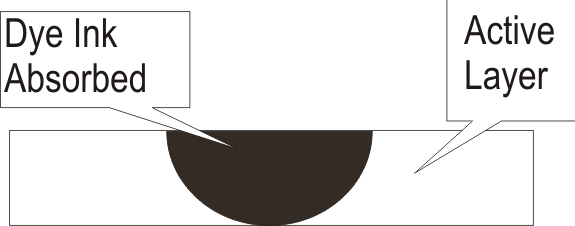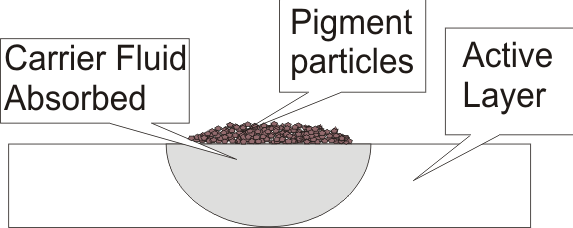
There are two types of ink commonly used for screeprint positive production Dyes are water-soluble, the ink is a homogenous liquid without any included particles. Pigmented inks consist of a carrier fluid, and pigment particles with a polymer coating to stabilise them in suspension and harden when dry. The 'Active' layer absorbs fluid, it cannot absorb pigment so the particles sit on the surface. The polymer takes time to cure and become hard, until the cure is complete the print remains vulnerable to scratching. Dye inks give a black output which resembles traditional silver film. Pigment inks are browner and you can see through the print. However, ink companies want their inks to survive for 75 years under glass and they add uv blocks to their ink. It is the uv block that allows them to be used for positives.
